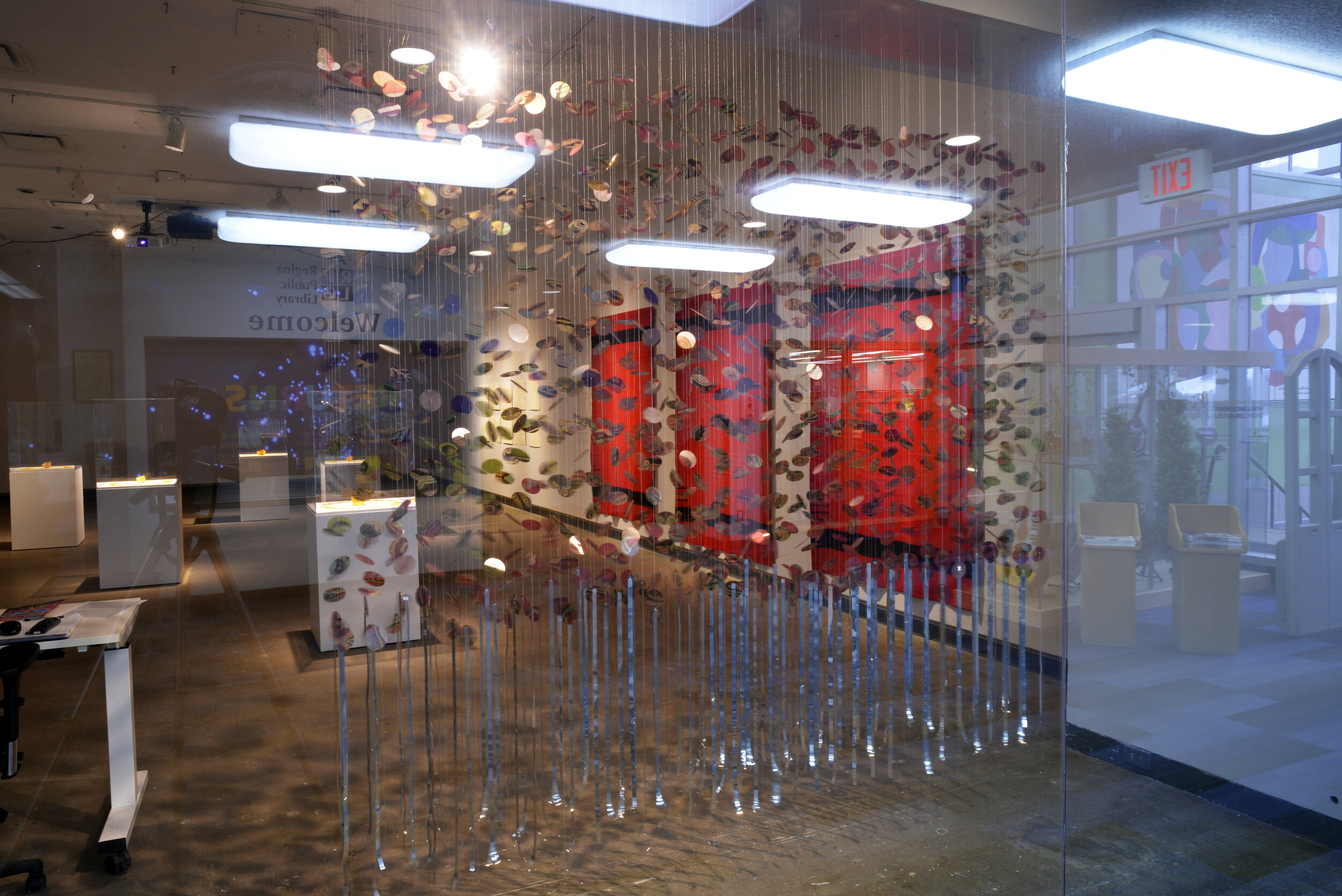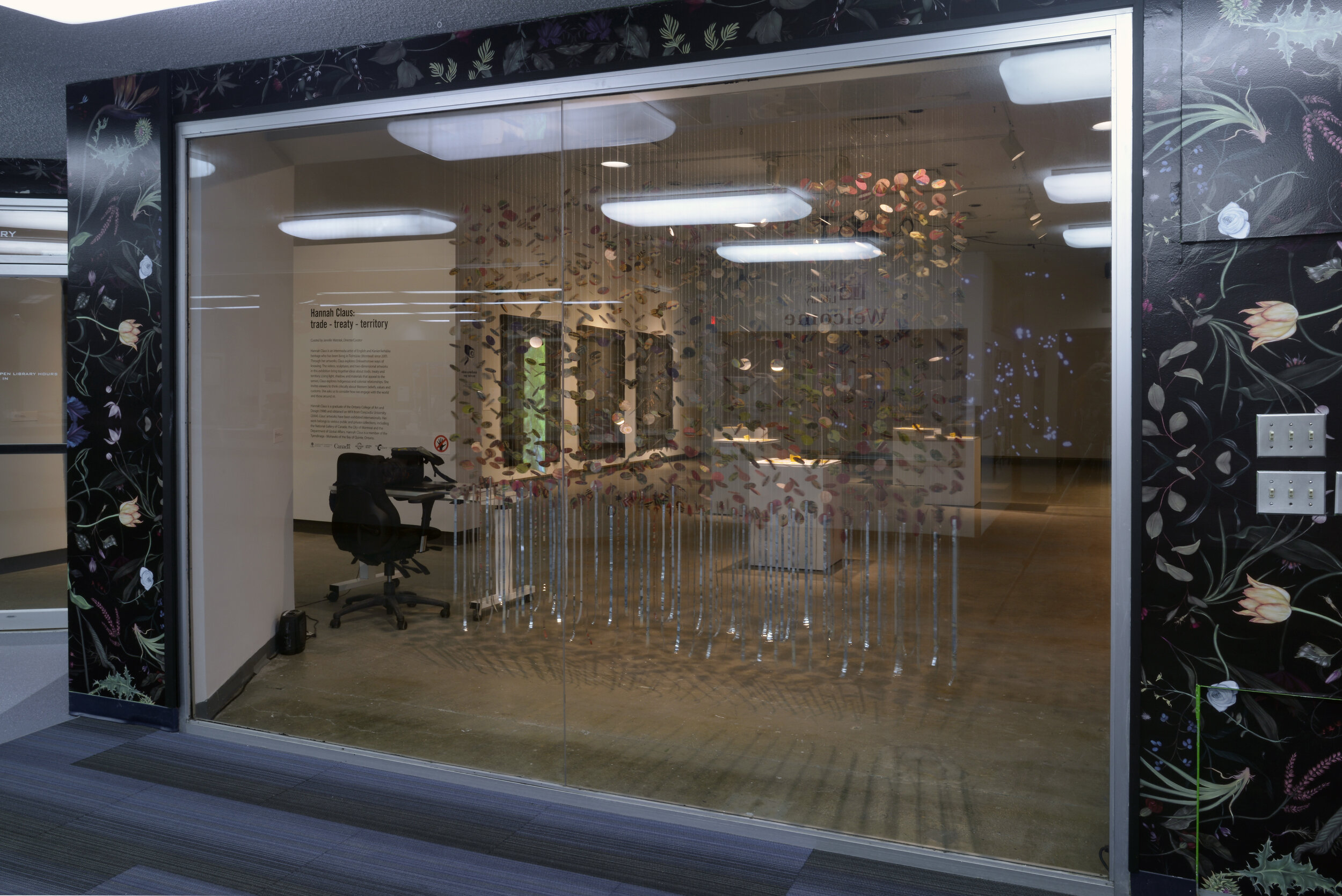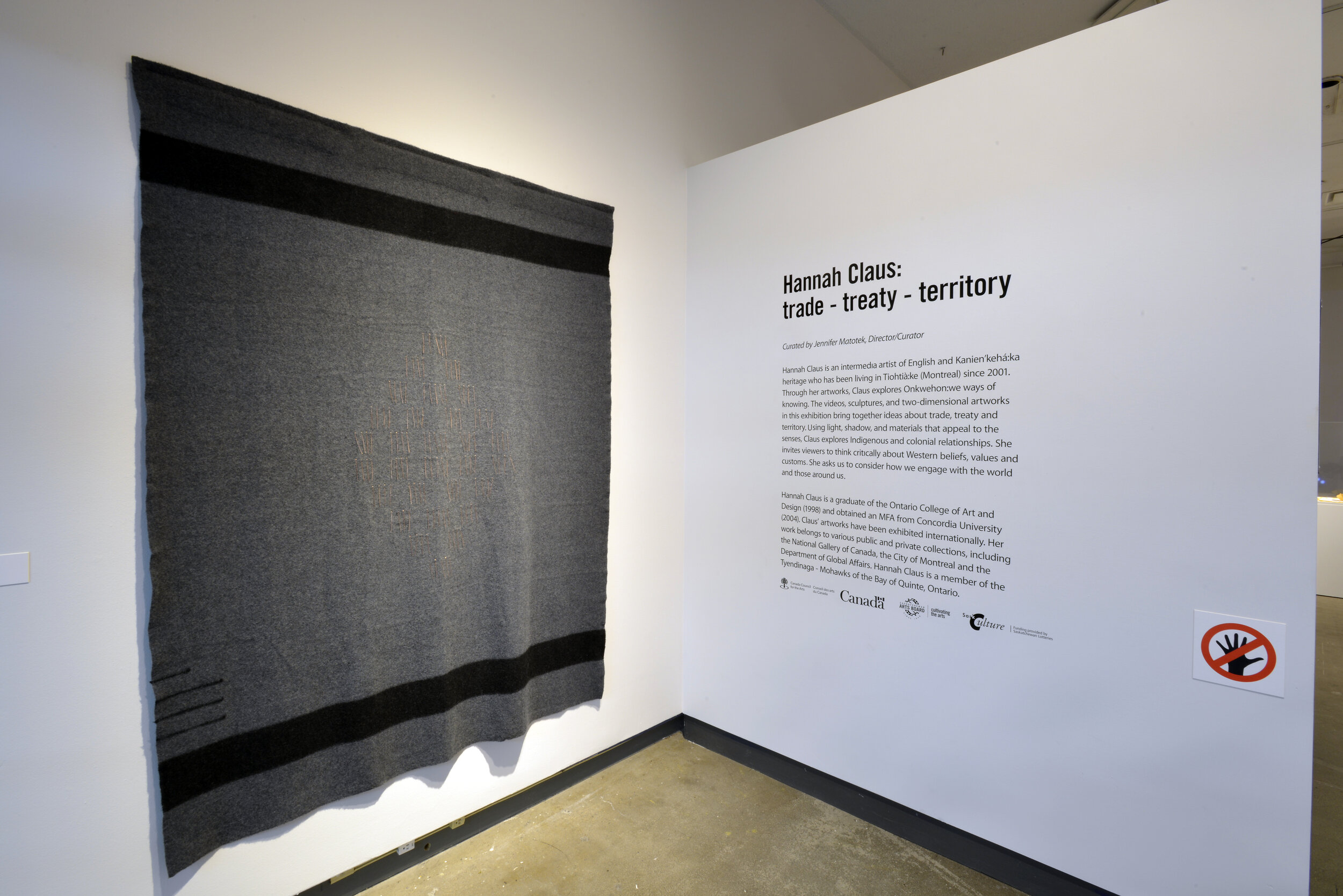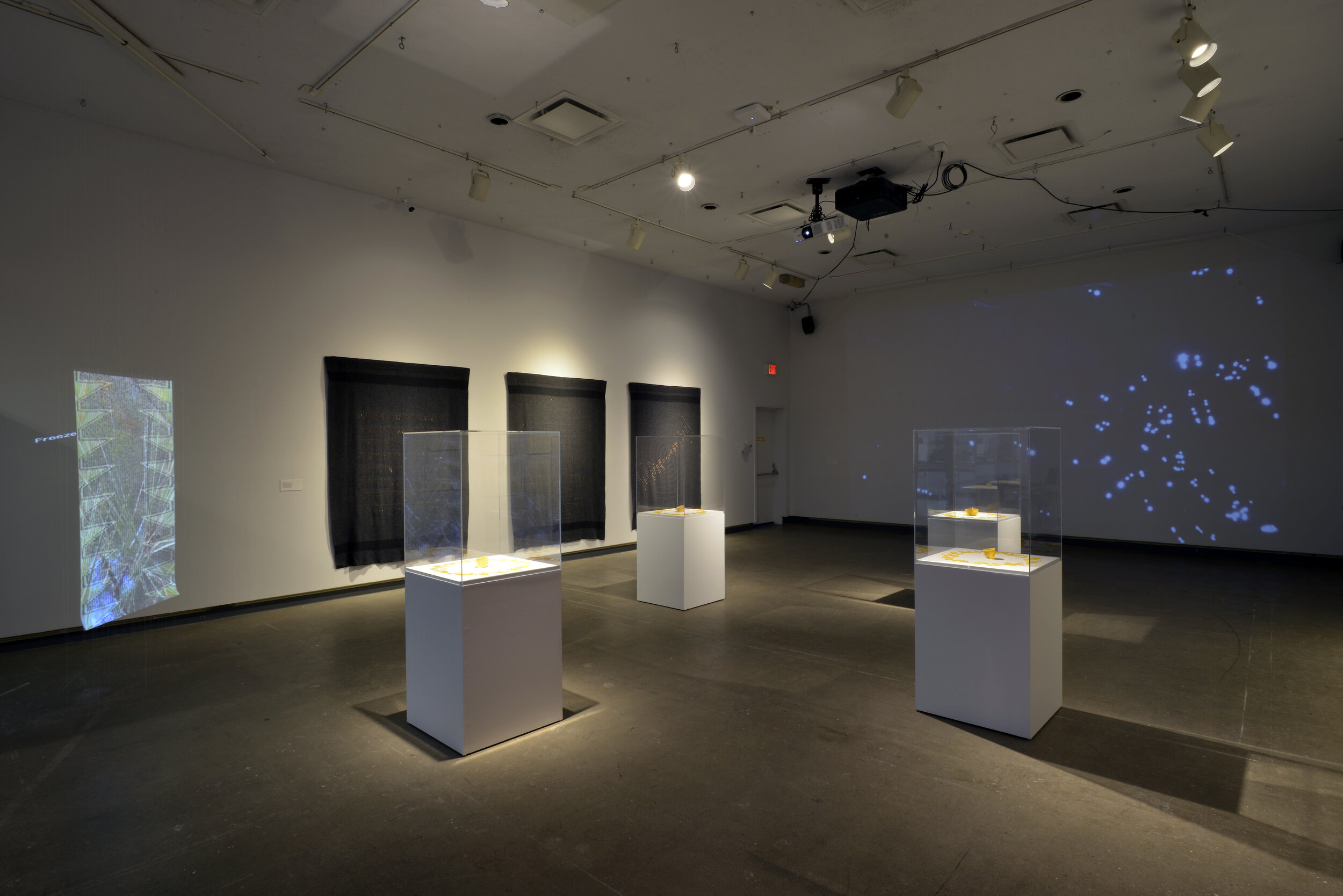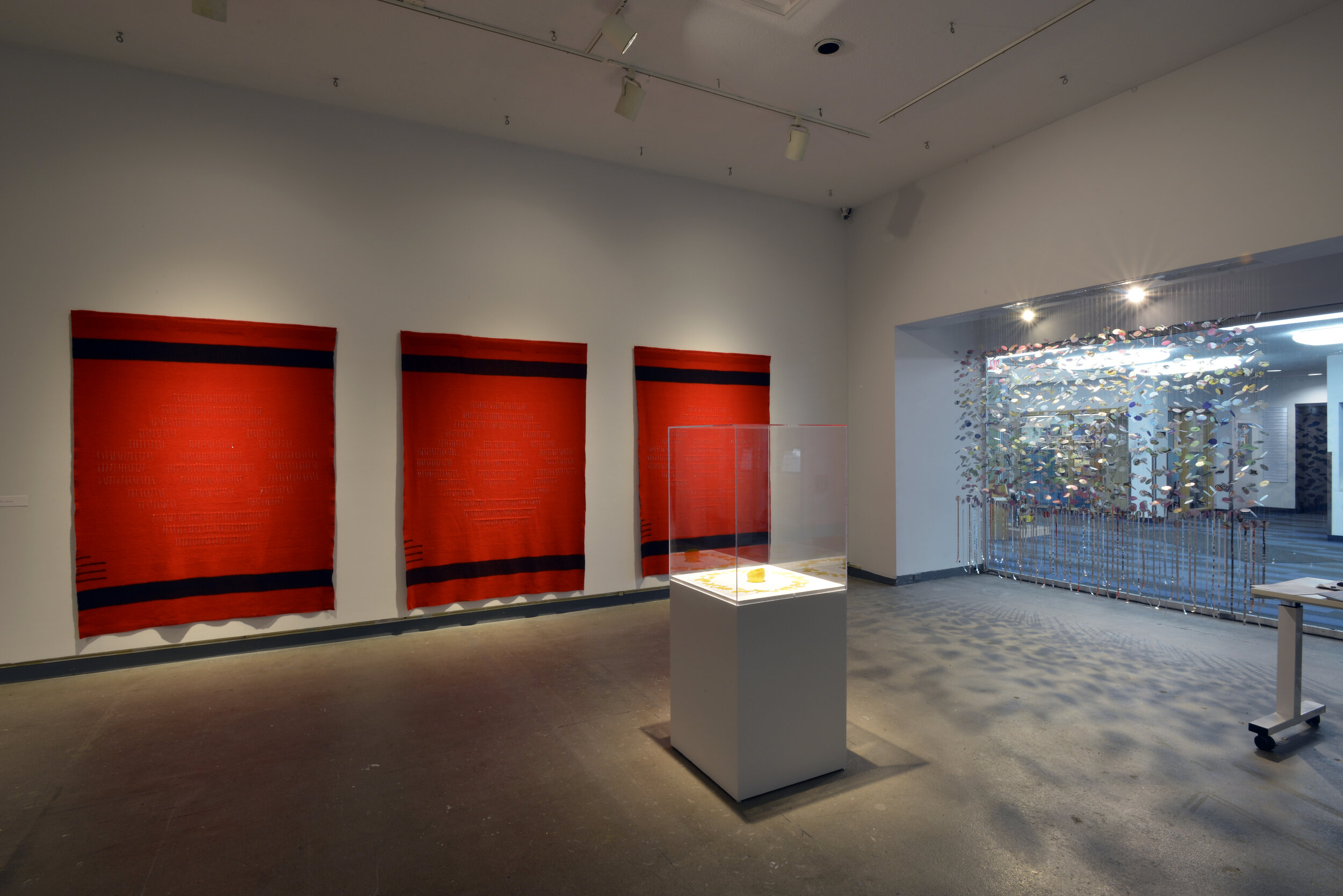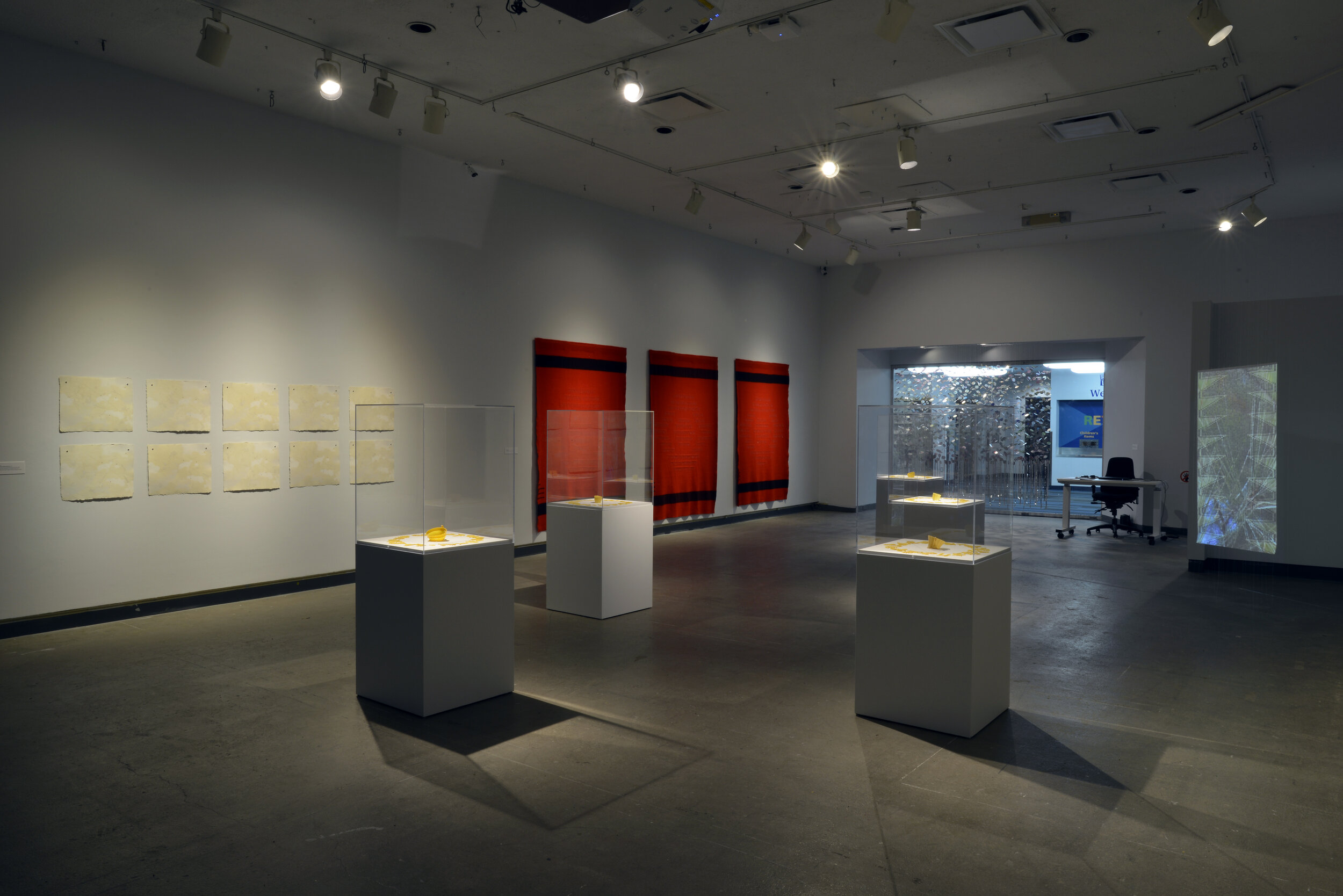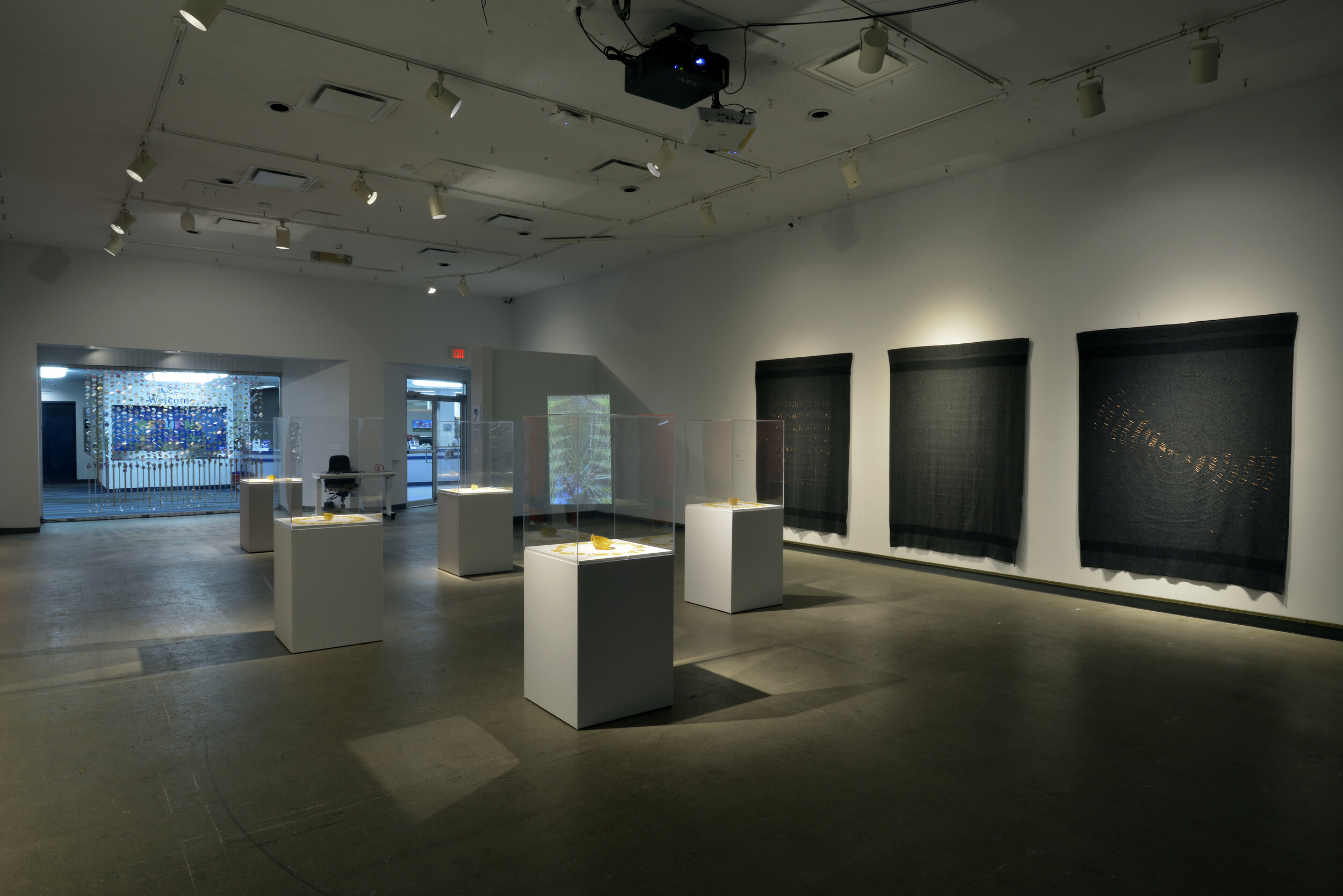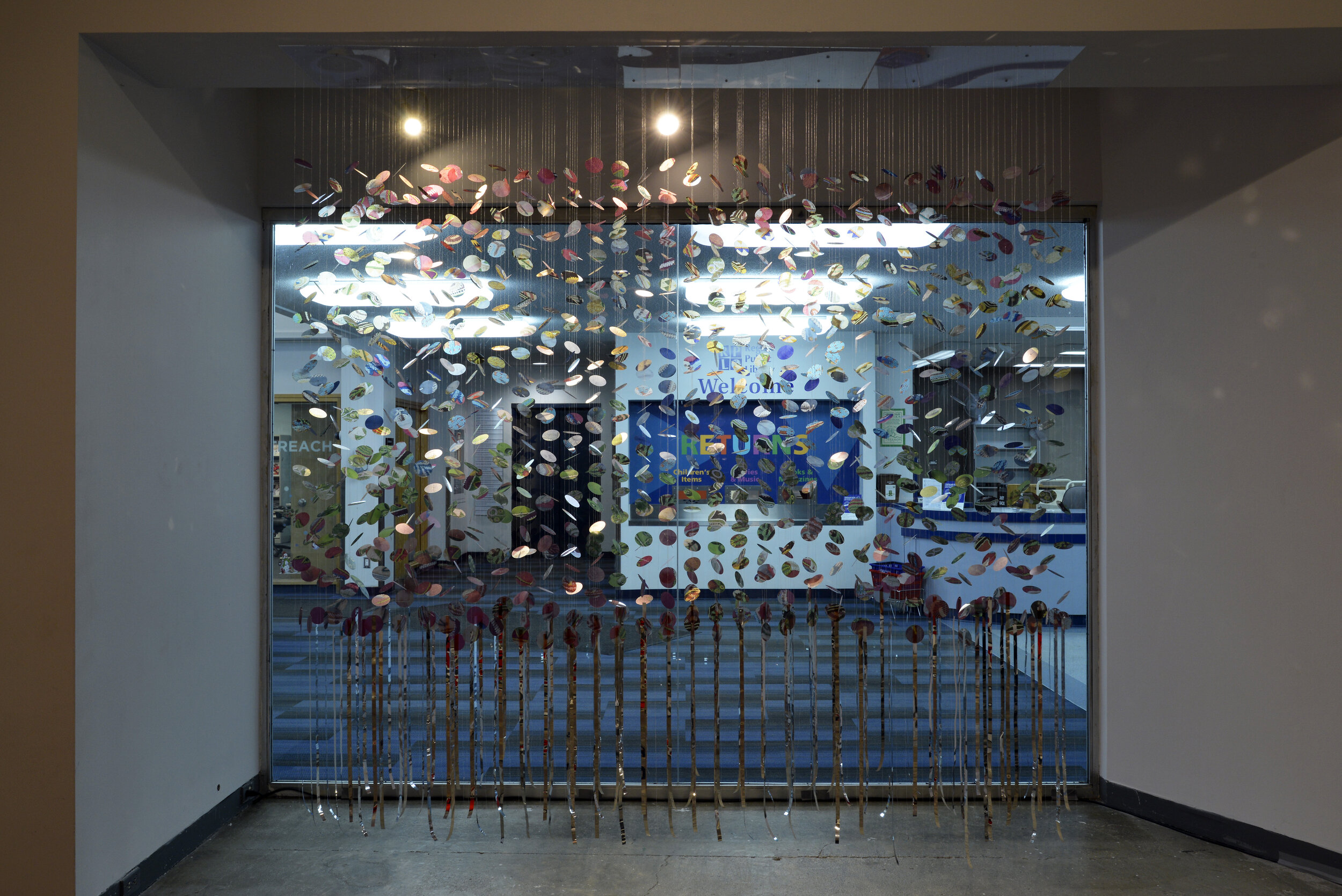Hannah Claus, trade is ceremony (sun) (detail), 2019, copper ball headpins, wool blanket. Photo courtesy of artist.
Hannah Claus is a visual artist of English and Kanien’kehà:ka/Mohawk ancestries. Claus’ artworks emphasize an Indigenous worldview, and often reference sky, earth, and water. For this exhibition, Claus explores trade and treaties. Through videos, sculptures, and two-dimensional works, Claus asks viewers to consider our connections with each other, and the responsibilities we have to the world around us.
Hannah Claus is a member of the Tyendinaga - Mohawks of the Bay of Quinte. She has been based in Tioh'tià:ke - Montreal, Quebec since 2001. She is a graduate of the Ontario College of Art and Design in 1997 and obtained an MFA from Concordia University in 2004. Claus’ artwork has exhibited internationally, and is included in various public collections. Clause teaches contemporary Indigenous art as a sessional lecturer at Kiuna, a First Nations post-secondary institution, in Odanak, Quebec.
Artist ↑
Essay ↑
Trade, Treaty, Territory: Encoding peaceful relations on the turtle’s back
By Dr. Kahente Horn-Miller, Kanienkehaka Bear Clan. Carleton University.
To be at all— to exist in any way —is to be somewhere, and to be somewhere is to be in some kind of place. Place is as requisite as the air we breathe, the ground on which we stand, the bodies we have. – The Fate of Place, by Edward Casey (2013)
Haudenosaunee people say – ‘our feet are firmly planted into the soil of our mother’. This symbolic language evokes images of our deep connections to this place, communicating memories of a time before there was time, when water covered the land, of our responsibilities to this earth. Onkwehón:we, the word we use to describe ourselves, means ‘original people’. In this way, as we dance our dances, sky women swaying and sliding our feet across the Longhouse floor, the fringes of our shawls and the ribbons on our dresses dancing in the light, the men singing ancient songs of thanks and remembrance, we acknowledge and are reminded of our ties to this place – the one that we call a'nowará:ke, or North America. From the moment that we engage with life outside the womb, take our first breath, listen to the fading birth cries of our mother and suckle from her breast, our everyday life consists of place. In time, we leave one place to go to another, to gather resources, to exchange ideas, to make friends and alliances. The banality of life may cause people to take place for granted. Often, we stay in a place because of some connection to it or leave because we have no other choice. Movements to, or occupation of a place may create or resolve conflict. Human interactions with place are the substance of life.
The works in trade treaty territory are about the relationships shaped by and within our landscape and environment – place. Hannah Claus invites us to engage with the world around us, the human need to define ‘our’ space, and the relations and responsibilities within it. Her work activates the visceral: connecting us to our present and our past. These works are a multisensorial approach to identities, relationships, Indigenous legal orders and Creation itself. Her work is not marked in time but is of time, itself: it is about reverence for our ancestors’ voices, their strength of mind, and their heightened skill at diplomacy.
We traded, made treaties, defined our territories in this place and this space is marked by our words, songs, and symbols. In them, we see ourselves and remember that we come from ‘here’. It is this place, this land that shapes Haudenosaunee language, our customs, our social life, our politics and our ceremonies.
Haudenosaunee culture and history in this place is also marked by the many interwoven relations we have nurtured, the agreements and friendships we have formed. Hannah’s work Everlasting opens our minds to the possibility of peaceful coexistence, asking us to engage with the idea that peace can be everlasting. One has only to look at the five pine needles as they sway in the wind reminding us of the strength of our original bond forged in ceremony and a way of life grounded in skennen and the Haudenosaunee tradition which is to engage with all newcomers in peace and respect.
In her works Hannah encodes our ancestors’ experiences in these places, the alliances and relationships made and broken. Her work reminds us of the importance of ceremonies like At the Woods Edge which marked our leaving and return home to this place with belts in hand, imprinting the words of peacebuilding in our memories. It takes place in that space between the safety of the palisaded village and the unknown of the forest. It is about wiping the eyes, cleaning the ears and cleansing the throat so that important connections and communication can happen. Good decisions take time and a willingness to put all differences aside. Trade is the ceremony, peace then, is the gift.
Hannah’s Trade As Ceremony copper pins and blanket installation is a reminder of that moment when we extended our hands in friendship to all newcomers. Belts of shell beads, purple and white, ‘a river made by hand’ marking space and these relationships. Hannah connects with us through her work, extends her hands, signaling us to come forward, bringing us into ceremony. She asks us to travel with her in this space where we enact relations, exchange words and knowledge, share resources, the foundations for peaceful coexistence. The blankets are a reminder of what peace might feel like if we were to wear it like a coat - warm and inviting, safe. The artwork speaks with us, to us. Teaching us what we need to know to continue the work of peacebuilding seven generations into the future.
Casey, E. S. (2013). The Fate of Place: a Philosophical History. Berkley and Los Angeles, California: University of California Press.
A'nowará:ke – “on the turtle”
Onkwehón:we – “original people”
Skennen – “peace”
Dr. Kahente Horn-Miller, Kanienkehaka Bear Clan is an Associate Professor at Carleton University whose work centers in looking at Haudenosaunee culture through the female lens. As a mother to four daughters and now grandmother, her work is about putting theory into practice and making academic work and community based research applicable to families and communities. She examines issues of identity, governance, oral history, rematriation, and mother law.
Installation Images ↑
Photos: Don Hall



